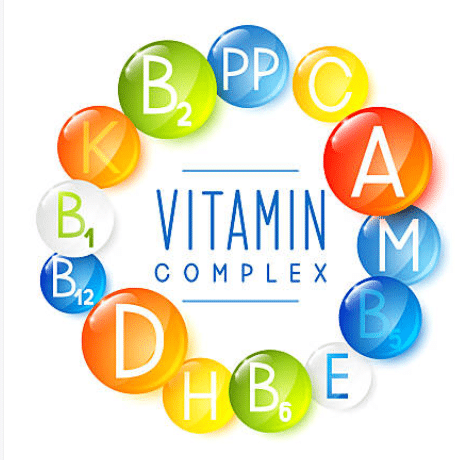Project Description
Vitamin E and Vitamin K are essential fat-soluble vitamins, each playing crucial roles in maintaining health and supporting various bodily functions. Here’s a deeper exploration of their structures, sources, functions, and health implications:
- Vitamin E:
Structure and Sources:
Vitamin E encompasses a group of compounds known as tocopherols and tocotrienols. Among them, alpha-tocopherol is the most biologically active form in humans. Vitamin E is primarily found in:
- Plant Oils: Such as sunflower, safflower, wheat germ, and soybean oil.
- Nuts and Seeds: Including almonds, hazelnuts, sunflower seeds, and peanuts.
- Green Leafy Vegetables: Such as spinach and kale.
- Fortified Foods and Supplements: Vitamin E is also added to some fortified cereals and dietary supplements.
Functions:
Vitamin E functions primarily as a powerful antioxidant:
- Antioxidant Activity: It protects cell membranes from oxidative damage caused by free radicals and reactive oxygen species.
- Cellular Health: Vitamin E helps maintain the integrity of cell membranes and prevents lipid peroxidation, which can lead to cell damage.
- Immune Function: It supports immune response by enhancing the activity of immune cells and cytokine production.
- Skin Health: Vitamin E is beneficial for skin health, promoting wound healing and protecting against UV-induced damage.
- Cardiovascular Health: Some studies suggest that vitamin E may play a role in cardiovascular health by preventing the oxidation of LDL cholesterol and reducing inflammation.
Deficiency and Toxicity:
- Deficiency: Vitamin E deficiency is rare but can occur in individuals with conditions affecting fat absorption, such as cystic fibrosis or liver disease. Symptoms may include muscle weakness, vision problems, and nerve damage.
- Toxicity: Excessive intake of vitamin E supplements can interfere with blood clotting and increase the risk of hemorrhage, especially in individuals taking anticoagulant medications.
- Vitamin K:
Structure and Sources:
Vitamin K exists in two primary forms:
- Vitamin K1 (Phylloquinone): Found predominantly in green leafy vegetables (such as spinach, kale, and broccoli) and some vegetable oils (soybean and canola oil).
- Vitamin K2 (Menaquinones): Synthesized by bacteria in the gut and found in fermented foods (such as cheese and natto) and animal products (meat, eggs).
Functions:
Vitamin K plays essential roles in blood clotting (coagulation) and bone health:
- Blood Clotting: It serves as a cofactor for the synthesis of clotting factors in the liver, necessary for normal blood coagulation and wound healing.
- Bone Health: Vitamin K is involved in the synthesis of osteocalcin, a protein that helps regulate calcium in bones and supports bone mineralization.
Deficiency and Toxicity:
- Deficiency: Vitamin K deficiency is rare in healthy adults but can lead to bleeding disorders, especially in newborns (vitamin K deficiency bleeding). Adults may experience increased risk of fractures due to impaired bone mineralization.
- Toxicity: Vitamin K toxicity is rare and typically only occurs with high-dose supplementation. It can interfere with anticoagulant medications like warfarin, leading to excessive blood clotting.
Comparison and Conclusion:
In summary, vitamin E and vitamin K are essential fat-soluble vitamins with distinct roles:
- Vitamin E primarily acts as an antioxidant, protecting cells from oxidative damage and supporting immune function and skin health.
- Vitamin K is critical for blood clotting and bone health, ensuring proper coagulation and contributing to bone mineralization.
Their different sources, functions, and implications for health underscore the importance of a balanced diet that includes a variety of foods rich in both vitamins E (plant oils, nuts, seeds) and K (green leafy vegetables, fermented foods). Adequate intake supports overall health and helps prevent deficiencies that can lead to various health complications. Consulting healthcare professionals for personalized recommendations is advisable, especially for individuals with specific dietary needs or medical conditions affecting vitamin absorption or metabolism.

